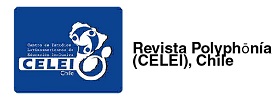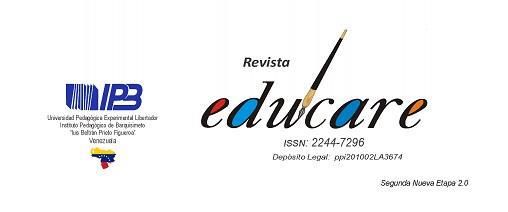QUIZIZZ AND SMARTPHONES: WARM-UP STRATEGY FOR IMPROVING UNIVERSITY STUDENTS’ CLASS PARTICIPATION
DOI:
https://doi.org/10.37135/chk.002.13.01Palabras clave:
Warm-up stategy, smartphones, quizizz, class participation, univestity studentsResumen
Due to the impact of the internet and technology on the millennials generation, the teaching and learning process must be integrated by both trends, as they can increase university students’ motivation as well as their levels of class participation. This integration can be achieved through potential and authentic pedagogical strategies: warm-up activities using smartphones and a technological tool called Quizizz. The objectives of this study were: 1) to identify if students increased their class participation after using quizzes and smartphones as a warm-up strategy, and 2) to explore the perceptions of the students about their level of class participation. Data were collected with the application of three instruments (the teacher's diary, a classroom map, a students' perception scale) and also a combination of a qualitative and a quantitative data analysis. The results of this study pointed out that all of the 47 participants improved their willingness to participate in class. However, their own perceptions about participation did not show any particular change. In other words, the students´ willingness to participate in class positively changed, but their own perceptions about participation remained the same before and after the application of these strategies.
Descargas
Citas
Bambaeeroo, F. & Shokrpour, N. (2017). The impact of the teachers’ non-verbal communication. Journal of Advances in Medical Education & Professionalism, 5(2), 51-59. Retrieved from https://www.ncbi.nlm.nih.gov/pmc/articles/PMC5346168/pdf/JAMP-5-51.pdf
Braun, V. & Clarke, V. (2006). Using thematic analysis in psychology. Qualitative research in psychology, 3(2), 77-101. doi: 10.1191/1478088706qp063oa
Bremner, S. (2010). Collaborative writing: Bridging the gap between the textbook and the workplace. English for Specific Purposes, 29(2), 121-132. doi: 10.1016/j.esp.2009.11.001
Cutter, M. (2015). Using Technology with English Language Learners in the Classroom. Education Masters, paper 313, 1-29. Retrieved from https://fisherpub.sjfc.edu/cgi/viewcontent.cgi?article=1314&context=education_ETD_masters
De Paz, J. F., Rodríguez, S., Zato, C. & Corchado, J. M. (2015). An Integrated System for Helping Disabled and Dependent People: AGALZ, AZTECA, and MOVI-MAS projects. In K. Kinder, C. Ehrwein (eds.). Ubiquitous Computing in the Workplace: What Ethical Issues? An interdisciplinary perspective (pp. 3-24). Cham, Switzerland: Springer International Publishing.
Díaz, C. (May 4th, 2017). Chile lidera la penetración de internet en la región y el smartphone continúa siendo el favorito. EMOL. Retrieved from https://goo.gl/UkvYNk
Diril, A. (2015). The Importance of Icebreakers and Warm-Up Activities in Language Teaching. ACC Journal, 21(3), 143-147. doi: 10.15240/tul/004/2015-3-014
Etikan, I., Musa, S. & Alkassim, R. (2016). Comparison of Convenience Sampling and Purposive Sampling. American Journal of Theoretical and Applied Statistics, 5(1), 1-4. doi: 10.11648/j.ajtas.20160501.11
Evans, S. (2012). Designing email tasks for the Business English classroom: Implications from a study of Hong Kong’s key industries. English for Specific Purposes, 31(3), 202-212.
García-Laborda, J. & Frances-Litzler, M. (2015). Current Perspectives in Teaching English for Specific Purposes. Onomázein 31, 38-51. doi: 10.7764/onomazein.31.1
Gikas, J. & Grant, M. M. (2013). Mobile computing devices in higher education: Student perspectives on learning with cellphones, smartphones & social media. The Internet and Higher Education, 19, 18-26. doi: 10.1016/j.iheduc.2013.06.002
Gros, B., Kinshuk & Maina, M. (2016). The Future of Ubiquitous Learning. Berlin-Heidelberg, Germany: Springer Berlin Heidelberg.
Harris, L. (2011). Secondary teachers’ conceptions of student engagement: Engagement in learning or in schooling? Teaching and Teacher Education, 27(2), 376-386. doi: 10.1016/j.tate.2010.09.006
Heflin, H., Shewmaker, J. & Nguyen, J. (2017). Impact of mobile technology on student attitudes, engagement, and learning. Computers & Education, 107, 91-99. doi: 10.1016/j.compedu.2017.01.006
Heigham, J. & Croker, R. (2009). Qualitative research in applied linguistics. Houndmills-Basingstoke-Hampshire, England: Palgrave Macmillan.
Kiernan, P. & Aizawa, K. (2004). Cell phones in task based learning - Are cell phones useful language learning tools?. Recall, 16(01), 71-84. doi: 10.1017/S0958344004000618
Korstjens, I. & Moser, A. (2018). Series: Practical guidance to qualitative research. Part 4: Trustworthiness and publishing. European Journal of General Practice, 24(1), 120-124. doi: 10.1080/13814788.2017.1375092
Langan, D., Schott, N., Wykes, T., Szeto, J., Kolpin, S., Lopez, C. & Smith, N. (2016) Students’ use of personal technologies in the university classroom: analysing the perceptions of the digital generation. Technology, Pedagogy and Education, 25(1), 101-117. doi: 10.1080/1475939X.2015.1120684
Liem, G. & Martin, A. (2012). The Motivation and Engagement Scale: Theoretical Framework, Psychometric Properties, and Applied Yields. Australian Psychologist, 47(1), 3-13. doi: 10.1111/j.1742-9544.2011.00049.x
McNeal, T. & van‘t Hooft, M. (2006). Anywhere, anytime: Using mobile phones for learning. Journal of the Research Center for Educational Technology, 2(2), 24–31.
Mosca, J., Paul, D. & Skiba, M. (2006). Technology Increases Students’ Attention. Journal of College Teaching & Learning, 3(8), 7-14. doi: 10.19030/tlc.v3i8.1687
Quizizz. (2020). Engage everyone, everywhere. Free tools to teach and learn anything, on any device, in‑person or remotely. Retrieved from https://quizizz.com/
Roblyer, M. (2015). Integrating educational technology into teaching (7th ed.). Boston, EE. UU: Pearson.
Rost, M. (2006). Generating student motivation. Retrieved from https://goo.gl/zu5rmy
Rushidi, J. (2013). The Benefits and Downsides of Creative Methods of Teaching in an EFL Classroom: A Case Study Conducted at South East European University, Tetovo-Macedonia. Journal of Education and Practice, 4(20), 128-135. Retrieved from https://www.iiste.org/Journals/index.php/JEP/article/view/7911/7986
Sajjad, S. (2016). Basic Guidelines for Research: An Introductory Approach for All Disciplines. Chittagong, Bangladesh: Book Zone Publication.
Sogunro, O. (2015). Motivating Factors for Adult Learners in Higher Education. International Journal of Higher Education, 4(1), 22-37. doi: 10.5430/ijhe.v4n1p22
SUBTEL. (March 16th, 2017). Febrero 2017: Usuarios de telecomunicaciones superan los 9 millones de portaciones numéricas [Press Release]. Retrieved from https://goo.gl/MQwukN
Sung, Y-T., Chang, K-E & Liu, T-C. (2016). The effects of integrating mobile devices with teaching and learning on students’ learning performance: A meta-analysis and research synthesis. Computers & Education, 96, 252-275. doi: 10.1016/j.compedu.2015.11.008
Thomas, K., O’Bannon, B. & Bolton, N. (2013). Cell Phones in the Classroom: Teachers’ Perspectives of Inclusion, Benefits, and Barriers. Computers in the Schools, 30(4), 295-308. doi: 10.1080/07380569.2013.844637
Thornton, P. & Houser, C. (2005). Using mobile phones in English education in Japan. Journal of Computer Assisted Learning, 21(3), 217-228. doi: 10.1111/j.1365-2729.2005.00129.x
Velandia, R. (2008). The role of warming up activities in adolescent students' involvement during the English class. Profile Issues in Teachers’ Professional Development, 10(1), 9-26. Retrieved from https://revistas.unal.edu.co/index.php/profile/article/view/10561/11021
Publicado
Versiones
- 2021-04-01 (3)
- 2021-02-11 (2)
- 2020-08-20 (1)
Cómo citar
Número
Sección
Licencia
Derechos de autor 2020 Claudio Heraldo Diaz Larenas, María José Toledo Soto

Esta obra está bajo una licencia internacional Creative Commons Atribución-NoComercial 4.0.
Responsabilidad de los autores:
Son responsables por las ideas y datos recogidos en los manuscritos, por la fidelidad de la información, por la corrección de las citas, por los derechos para publicar cualquier material incluido en el texto y por la presentación del manuscrito en el formato requerido por la Revista (plantilla word). Un manuscrito enviado a CHAKIÑAN no debe estar publicado con anterioridad, ni haber sido presentado en la misma forma a otro medio de publicación.
Derechos de Autor:
Los artículos publicados no comprometen necesariamente el punto de vista de la REVISTA CHAKIÑAN. La Revista se alinea a la política de la licencia de Creative Commons Reconocimiento-No comercial 4.0 Internacional (CC BY-NC 4.0). Cada autor conserva el derecho sobre el artículo publicado en Chakiñan.
Declaración de privacidad
Los datos personales y las direcciones de correo electrónico introducidos en esta revista se usarán, exclusivamente, para los fines declarados por la publicación y no estarán disponibles para ningún otro propósito u otra persona.



















